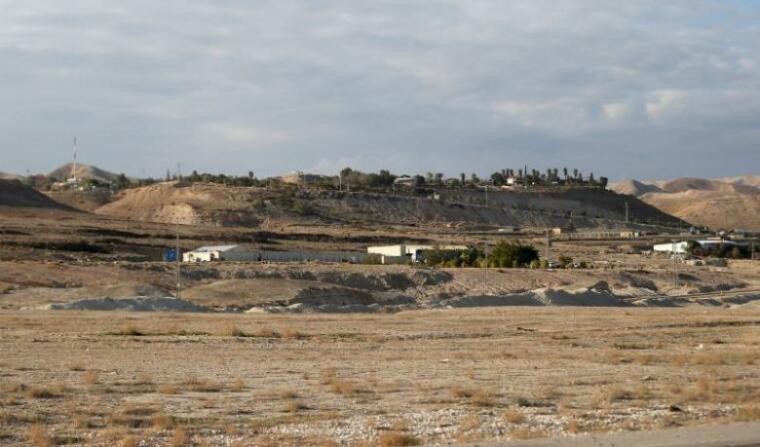Ancient stone tablet reveals name of biblical-era ruler of Judea

The discovery of a 1,800-year-old stone tablet on the seabed off the coast of Israel reveals the name of the ruler during one of the bloodiest periods in Jewish history — the Bar Kokhba revolt, during which the Jews of the Judea revolted against the Roman Empire.
Archeologists from the University of Haifa found the stone slab at Tel Dor, an underwater area 18 miles south of Haifa. Tel Dor was once the site of the biblical city of Dor. The massive stone tablet has an inscription that consists of seven lines of ancient Greek. It has since been brought out of the water.
The researchers have yet to decipher the text its entirety, but they have already achieved two important things in the discovery of the stone tablet.
The first one is the definite identification of Gargilius Antiquus as the governor of Judea during the period. The same name also appeared on another inscription that was unearthed seven decades ago, but the first one did not indicate what province he commanded.
The other achievement is the discovery of a second artifact on which the name "Judea" appears. Such is important in the archeological world because following the Bar Kochba revolt in 131 C.E., the Romans changed the status of the province of Judea and wiped out mentions of its name. What was then Judea was merged with Syria to form the province of Syria-Palaestina. The only other item that bears the name "Judea" has an inscription that also mentions the name Pontius Pilate.
Researchers from the university are currently working on deciphering the inscription. "Together with the inscription that was found around the time the State of Israel was established, we have here two monuments honoring and lauding the governor Antiquus. The question is – why? Do these inscriptions mark two different significant events, or was it the usual practice to erect a new sculpture for the patron of the city without any special reason?" a press release from the researchers reads.
 Christians don't have to affirm transgenderism, but they can’t express that view at work: tribunal
Christians don't have to affirm transgenderism, but they can’t express that view at work: tribunal Archaeology discovery: Medieval Christian prayer beads found on Holy Island
Archaeology discovery: Medieval Christian prayer beads found on Holy Island Presbyterian Church in America votes to leave National Association of Evangelicals
Presbyterian Church in America votes to leave National Association of Evangelicals Over 50 killed in 'vile and satanic' attack at Nigerian church on Pentecost Sunday
Over 50 killed in 'vile and satanic' attack at Nigerian church on Pentecost Sunday Ukrainian Orthodox Church severs ties with Moscow over Patriarch Kirill's support for Putin's war
Ukrainian Orthodox Church severs ties with Moscow over Patriarch Kirill's support for Putin's war Islamic State kills 20 Nigerian Christians as revenge for US airstrike
Islamic State kills 20 Nigerian Christians as revenge for US airstrike Man who served 33 years in prison for murder leads inmates to Christ
Man who served 33 years in prison for murder leads inmates to Christ


 Nigerian student beaten to death, body burned over ‘blasphemous’ WhatsApp message
Nigerian student beaten to death, body burned over ‘blasphemous’ WhatsApp message 'A new low': World reacts after Hong Kong arrests 90-year-old Cardinal Joseph Zen
'A new low': World reacts after Hong Kong arrests 90-year-old Cardinal Joseph Zen Iran sentences Christian man to 10 years in prison for hosting house church worship gathering
Iran sentences Christian man to 10 years in prison for hosting house church worship gathering French Guyana: Pastor shot dead, church set on fire after meeting delegation of Evangelicals
French Guyana: Pastor shot dead, church set on fire after meeting delegation of Evangelicals ‘Talking Jesus’ report finds only 6% of UK adults identify as practicing Christians
‘Talking Jesus’ report finds only 6% of UK adults identify as practicing Christians Mission Eurasia ministry center blown up in Ukraine, hundreds of Bibles destroyed: 'God will provide'
Mission Eurasia ministry center blown up in Ukraine, hundreds of Bibles destroyed: 'God will provide' Church holds service for first time after ISIS desecrated it 8 years ago
Church holds service for first time after ISIS desecrated it 8 years ago Burger King apologizes for 'offensive campaign' using Jesus' words at the Last Supper
Burger King apologizes for 'offensive campaign' using Jesus' words at the Last Supper Uganda: Muslims abduct teacher, burn him inside mosque for praying in Christ’s name
Uganda: Muslims abduct teacher, burn him inside mosque for praying in Christ’s name